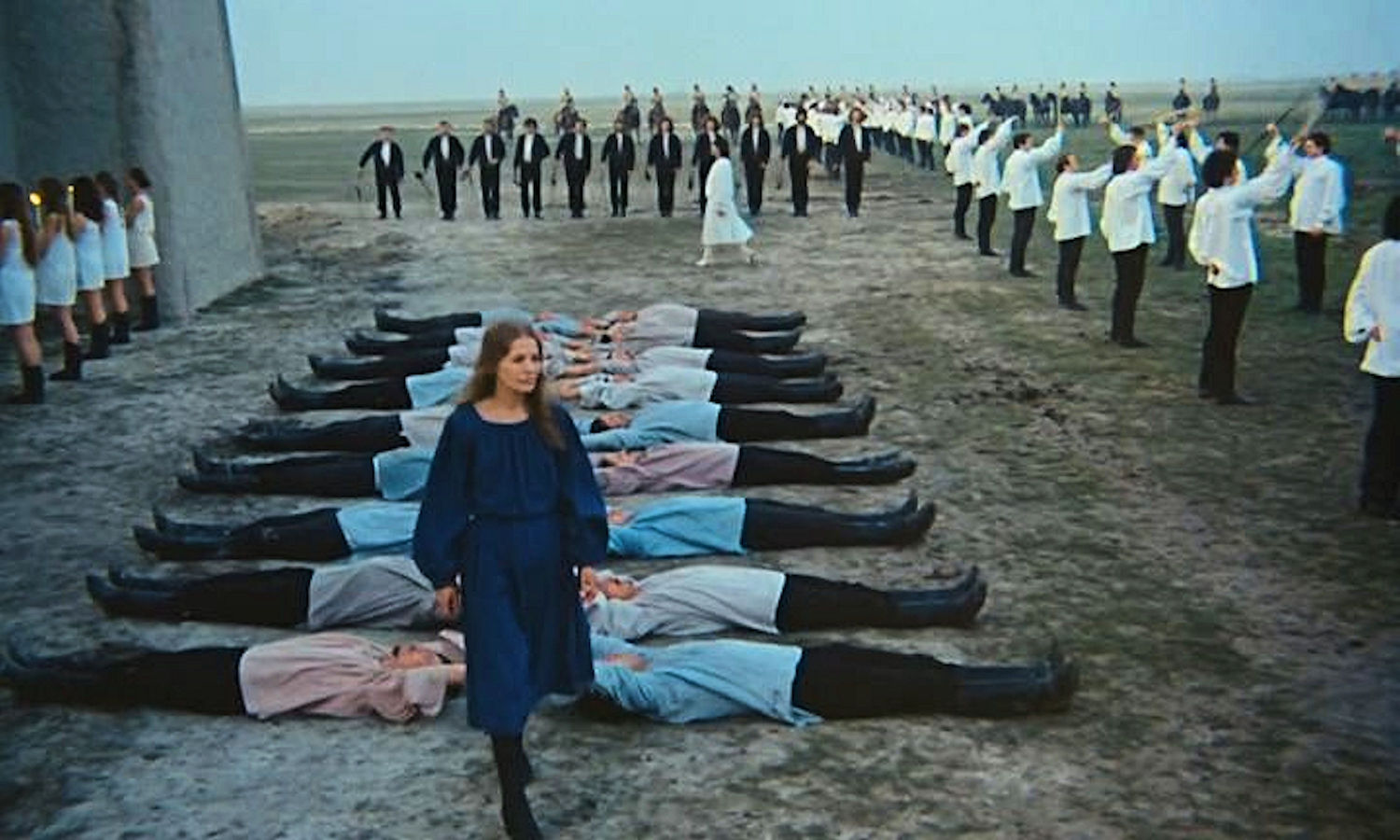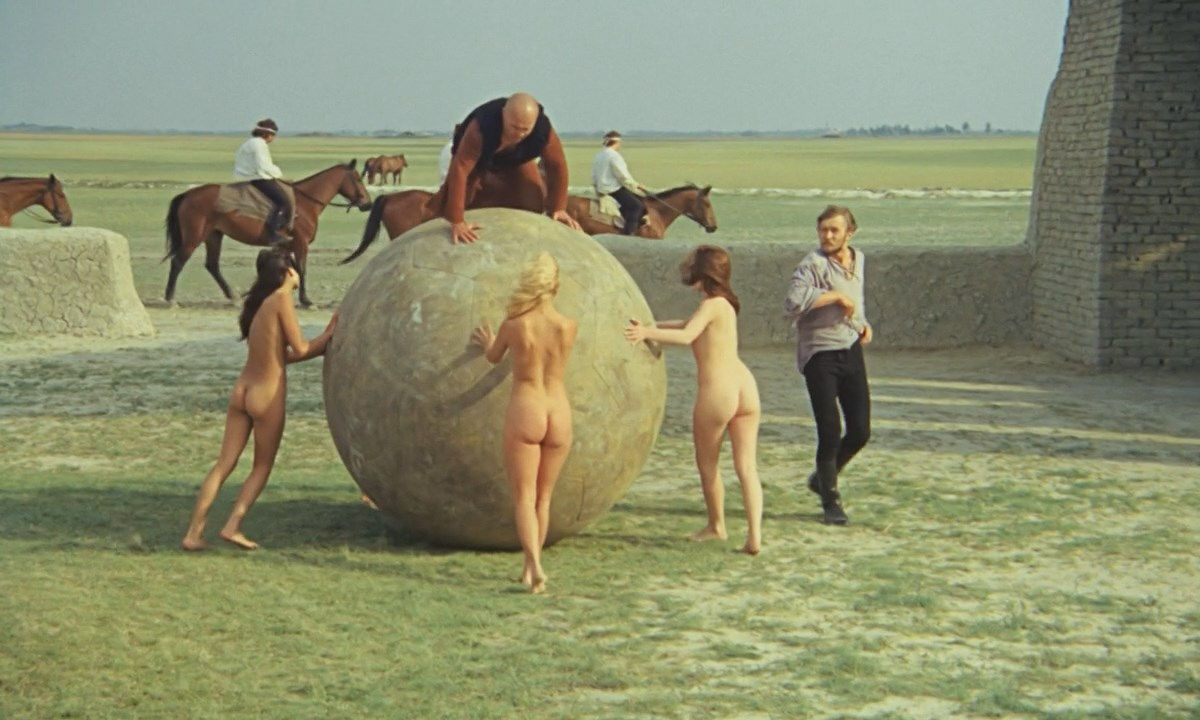Early success in any of the arts comes with a certain peril. This is especially true for artists whose art is rebelling against something like an authoritarian government. Filmmakers tend to require a lot of resources, so they are especially prone to censorship by whoever holds the purse strings. Some filmmakers have done their best work under this sort of duress. Miklós Jancsó was one of the most famous filmmakers in Europe in the 1970s. He made gorgeous historical spectacles that drew on the resources that the Soviet Union could muster, thinking that they’d get a propaganda film. Sometimes they thought that they did, and sometimes his work got banned. His work won awards at European film festivals and influenced a whole new generation of filmmakers. (He made Béla Tarr’s favorite film). Jancsó eventually moved to Italy and fell out of favor.
Metrograph cinema in New York City recently showcased six films from what is considered his peak era. All but one of them are period films. The sixth film takes a historical event (the 1947 takeover of Hungary by the Communist Party) and attires the cast in ‘60s fashions. This one was slated to play Cannes Film Festival the year it was canceled by the events of 1968, and the cast looks and sounds a lot like the Paris demonstrators.

Electra, My Love (1974)
A feature of all of the films is how fluid power dynamics can be. Like Game of Thrones, no character is important enough to escape a bullet or sword when the dynamics shift. This was often a thorn in the side of the censors when a character who had been spouting the party line gets corrupted into power for its own sake. Much of the storytelling is achieved through song, and even songs that toe the party line can throw ironic shade. Any time you hear music in these films, you see the people who are performing. These films employed scores of musicians, folk dancers, horses and experts with synchronized bullwhips.
The best place to start is Electra, My Love (1974) It consists of 12 carefully choreographed long shots in which the camera seems to move at will through the action. It feels like watching a magician trying to figure out how some of these shots were made before the advent of steady-cams. The choreography that creates the illusion of camera movement (as well as a constant sense that everything onscreen is moving) is frequently compared to Busby Berkeley. Because this one is officially fictional, he pulls out the stops and ends up with a lot of visuals that might bring Alejandro Jodorowsky to mind. Some of the folk dancers bust moves that might look like an at-home hip-hop video. The overall effect can be downright hypnotic. Seeing these films, it is jaw-dropping to realize that he isn’t better known. The prints shown at Metrograph were recent restorations that appear to belong to Kino. That bodes well for wider availability of these titles. They feel more relevant by the day.


